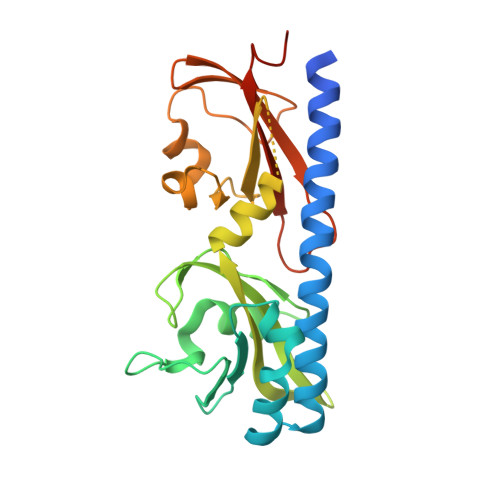Broad Specificity of Amino Acid Chemoreceptor CtaA ofPseudomonas fluorescensIs Afforded by Plasticity of Its Amphipathic Ligand-Binding Pocket.
Ud-Din, A.I.M.S., Khan, M.F., Roujeinikova, A.(2020) Mol Plant Microbe Interact 33: 612-623
- PubMed: 31909676
- DOI: https://doi.org/10.1094/MPMI-10-19-0277-R
- Primary Citation of Related Structures:
6PXY, 6PY3, 6PY4, 6PY5, 6PYI, 6Q0F, 6Q0G - PubMed Abstract:
Motile bacteria follow gradients of nutrients or other environmental cues. Many bacterial chemoreceptors that sense exogenous amino acids contain a double Cache (dCache; calcium channels and chemotaxis receptors) ligand-binding domain (LBD). A growing number of studies suggest that broad-specificity dCache-type receptors that sense more than one amino acid are common. Here, we present an investigation into the mechanism by which the dCache LBD of the chemoreceptor CtaA from a plant growth-promoting rhizobacterium, Pseudomonas fluorescens , recognizes several chemically distinct amino acids. We established that amino acids that signal by directly binding to the CtaA LBD include ones with aliphatic (l-alanine, l-proline, l-leucine, l-isoleucine, l-valine), small polar (l-serine), and large charged (l - arginine) side chains. We determined the structure of CtaA LBD in complex with different amino acids, revealing that its ability to recognize a range of structurally and chemically distinct amino acids is afforded by its easily accessible plastic pocket, which can expand or contract according to the size of the ligand side chain. The amphipathic character of the pocket enables promiscuous interactions with both polar and nonpolar amino acids. The results not only clarify the means by which various amino acids are recognized by CtaA but also reveal that a conserved mobile lid over the ligand-binding pocket adopts the same conformation in all complexes, consistent with this being an important and invariant part of the signaling mechanism.
Organizational Affiliation:
Infection and Immunity Program, Monash Biomedicine Discovery Institute, Australia, Department of Microbiology, Monash University, Clayton, Victoria 3800, Australia.














